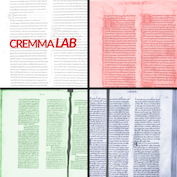
|
conference on HTR to be held on June 23 and 24, 2022 at the École nationale des chartes, Paris
23-24 Jun 2022 Paris (France)
|
|
ATTENTION : Thursday, August 21 an operation is planned on the database server
which may cause access issues on Sciencesconf |
|
|
"Ancient documents and automatic recognition of handwriting", 23 and 24 June 2022, ENC, Paris. This scientific event will be held on 23 and 24 June 2022 at the École nationale des chartes (65, rue de Richelieu, 75002 Paris), room Delisle. This event will be held in a mixed format with a broadcast on Youtube : - 23 June : https://www.youtube.com/watch?v=dE1XUXiuitU - 24 June : https://www.youtube.com/watch?v=YORfV0yIsQg Today, many projects include an automatic text acquisition step in their production chain or data exploitation. Several transcription platforms and different HTR engines are now available. The integration of this technology into more and more efficient processing chains has led to the automation of tasks that question the place of researchers in the text production process. This new, data-intensive practice makes it urgent to gather, and therefore harmonise corpora for the constitution of training corpora, but also to make them available in order to improve the quality of HTR results. Thus, the École nationale des chartes, in partnership with the LabEx Hastec and the LAMOP, through CREMMALab project supported by the DIM MAP, organise on 23 and 24 June 2022 two days of conferences combining philological and technical questions on the use of HTR for ancient documents. We will take this opportunity to review HTR through its tools, results and new practices induced by its use in publishing and exploitation projects. We hope that this event will also be an opportunity to bring together a growing international community of researchers to discuss the use of HTR in their scientific projects. The proposal is based on a desire to treat the theme of this conference from a technical point of view, while linking it to scientific problem of constitution and/or exploitation of corpor, by questioning both the practical aspects of the use of this technology (development of HTR engine, transcription interface, user interface to use and train models, etc.), while raising its methodological issues and its impact on research data. If you wish to participate in these days participate in person, please register at the following link: https://dahtr.sciencesconf.org/registration
Programm - Day 1
Programm - Day 2
Team Organising Committee: Ariane Pinche and Floriane Chiffoleau Scientific Committee: Jean-Baptiste Camps, Alix Chagué, Thibault Clérice, Frédéric Duval, Vincent Jolivet, Benjamin Kiessling, Nicolas Perreaux, Ariane Pinche, Laurent Romary, Peter Stokes For any information request, you can contact us at the following address: dahtr@sciencesconf.org
|

